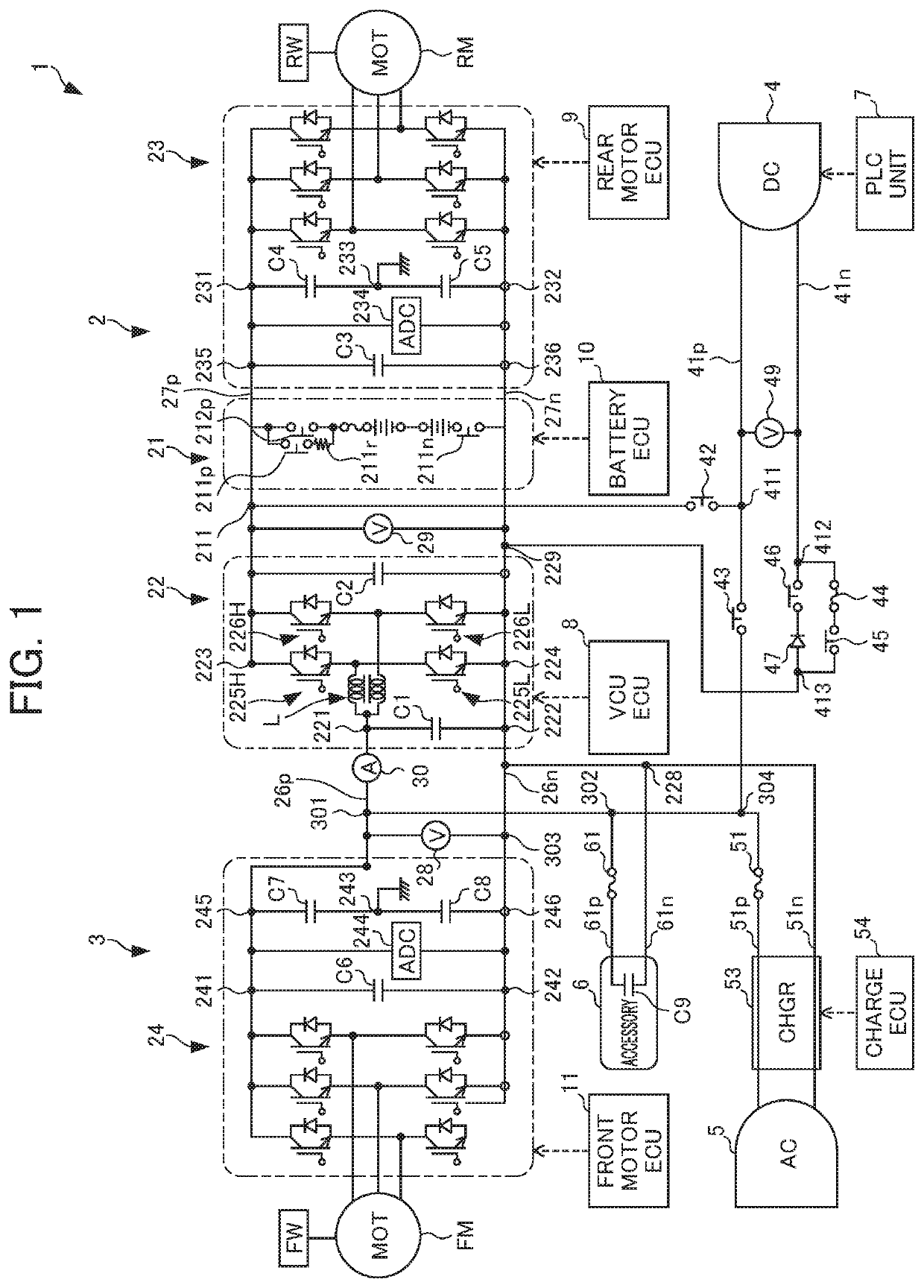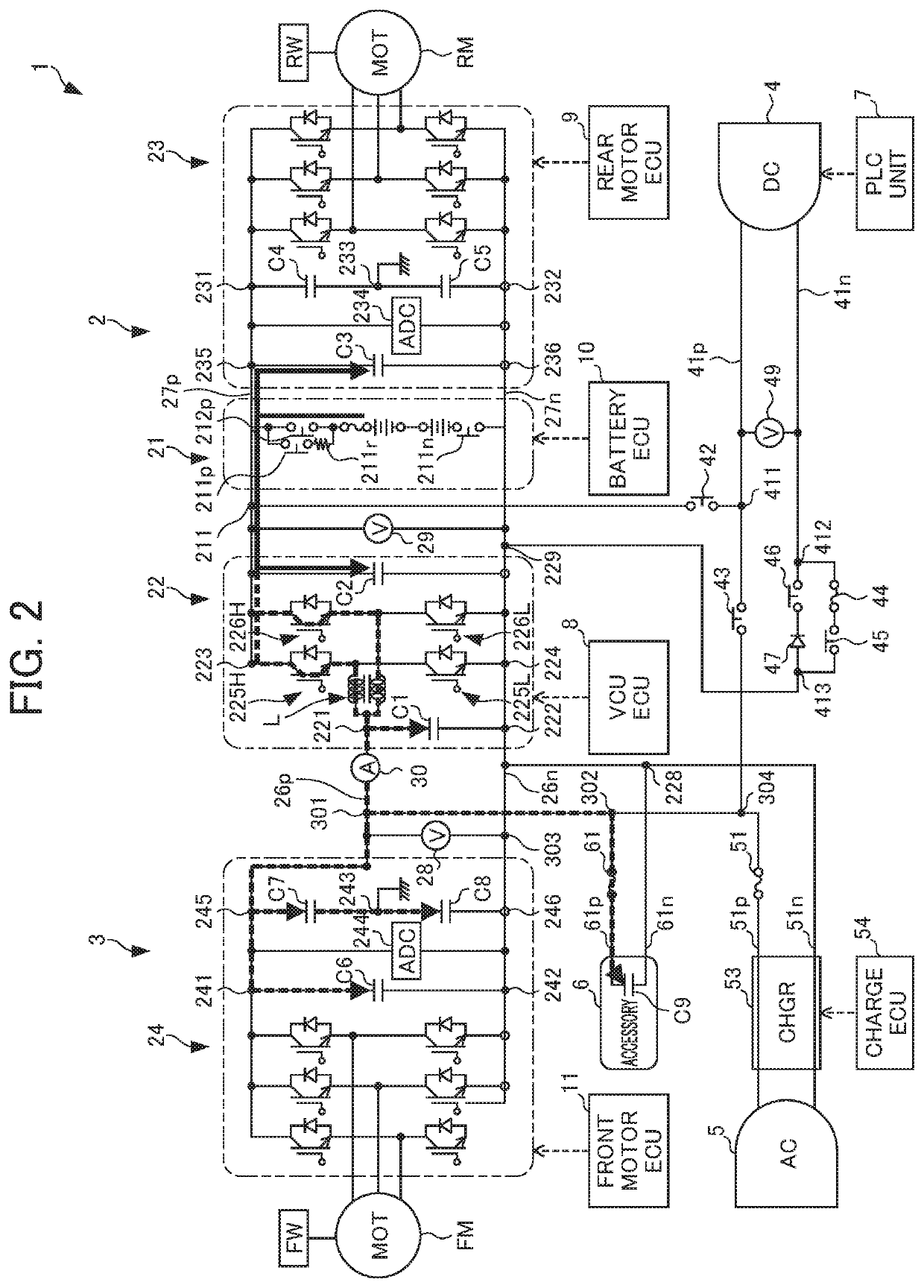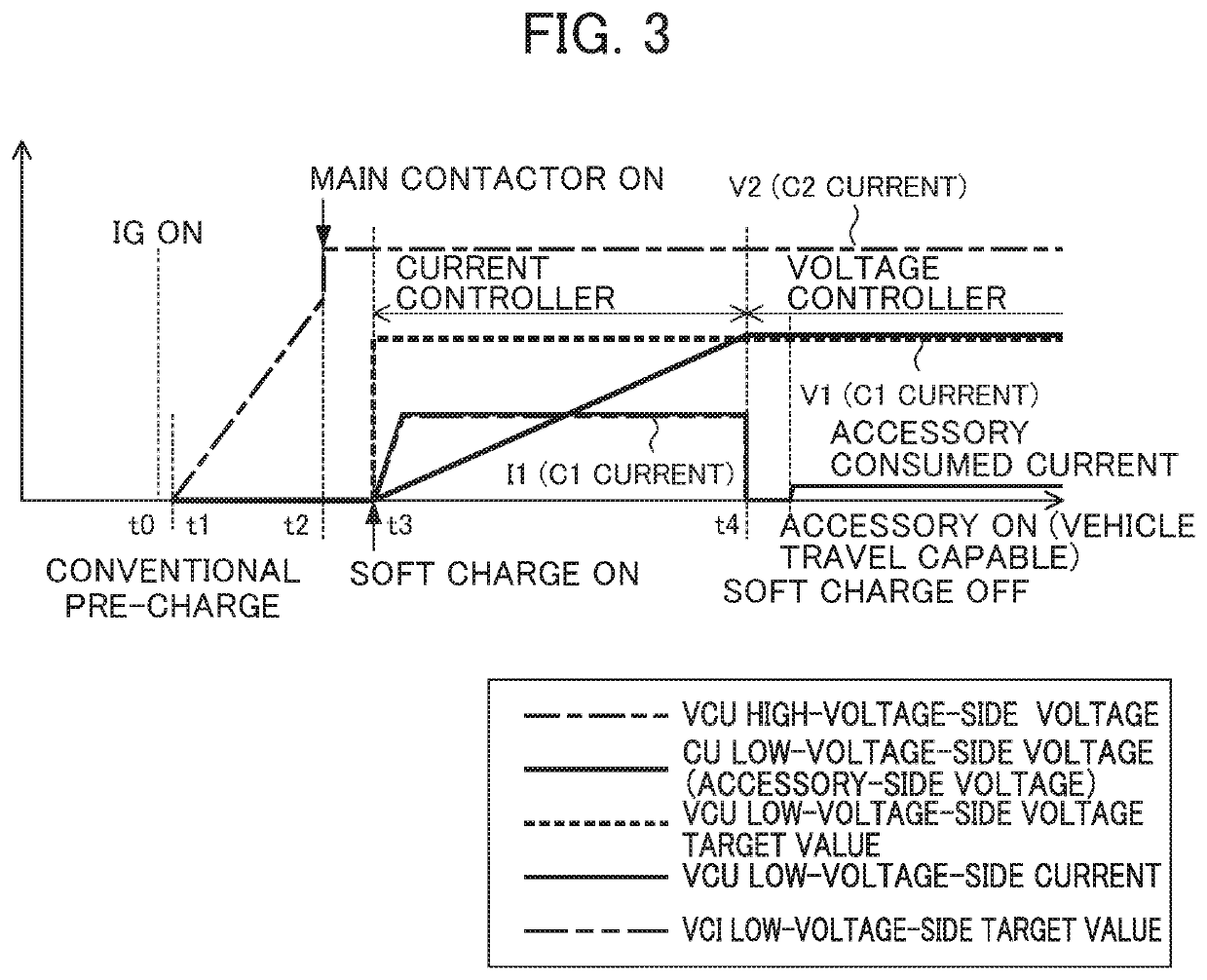Power supply system for vehicle
a power supply system and vehicle technology, applied in the direction of battery/fuel cell control arrangement, propulsion by batteries/cells, instruments, etc., can solve the problems of circuit breakdown, limited selection of motor combinations, etc., and achieve the effect of suppressing system failur
- Summary
- Abstract
- Description
- Claims
- Application Information
AI Technical Summary
Benefits of technology
Problems solved by technology
Method used
Image
Examples
first embodiment
[0055]FIG. 3 is a timing chart of pre-charge according to the At time t0, when ignition turns ON, the VCUECU 8 starts control of electric power. At time t1, pre-charge starts. When the VCUECU 8 sets the contactor 211p to the ON state, current flows to the capacitors C2, C3 in the path shown by arrow A, and the voltage value V2 gradually rises from time t1. At time t2, the VCUECU 8 sets the main contactor 212p to the ON state. At time t3, when setting the switches of the high-arm elements 225H, 226H to the ON state, the electric charge flows to the capacitors C1, C6, C7, C8 and C9 in the path shown by arrow B in FIG. 3. When the VCUECU 8 controls so as to keep constant the current I1 flowing into the capacitor C1 based on the acquired value of the current sensor 30, the voltage value V1 of the capacitor C1 gradually rises. When the capacitor C1 enters the full charge state at time t4, the voltage value V1 reaches a constant value, and the value of current I1 becomes almost 0. The va...
second embodiment
[0058]FIG. 5 is a timing chart of pre-charge according to the At time t0, when the ignition turns ON, the VCUECU 8 starts control of electric power. At time t1, pre-charge starts. When the VCUECU 8 sets the contactor 211p to the ON state, current flows to the capacitors C2, C3 in the path shown by arrow A, and the voltage value V2 gradually rises from time t1. At time t2, the VCUECU 8 sets the main contactor 212p to the ON state. At time t3, when setting the switches of the high-arm terminals 225H, 226H to the ON state, the electric charge flows to the capacitors C1, C6, C7, C8 and C9 in the path shown by arrow B in FIG. 4. The VCUECU 8 controls the current I1 flowing to the capacitor C1, so that the capacitor C1 rises step-wise based on the acquired value of the voltage sensors 28, 29. When the voltage value V1 of the capacitor C1 rises step-wise, and the capacitor C1 reaches the fully charged state at time t4, the voltage value V1 reaches a constant value, and the value of the cu...
third embodiment
[0061]The switching element 400 may be controlled by the VCUECU 8, as a part of the DCDC converter 22. In this case, by the VCUECU 8 turning ON / OFF the switching element 400, it is possible to slowly charge the capacitor C1 by easing the current from the high-voltage battery 21. The switching element 400, upon the element of the top-side arm of the high-voltage DCDC converter 22 short-circuit failing, for example, can suppress the high voltage from being applied to the primary side to which the front motor ECU 11, accessory, etc. are connected. In this way, according to the power supply system for the vehicle it becomes possible to prevent failure of the power supply system 1.
[0062]It should be noted that the equipment called accessory in the aforementioned first to third embodiments may be the DC charging unit 4 capable of charging by DC charging source; voltage sensor 49 which acquires the voltage value applied to the DC charging unit 4 by an external charging device; a high-volt...
PUM
 Login to View More
Login to View More Abstract
Description
Claims
Application Information
 Login to View More
Login to View More - R&D
- Intellectual Property
- Life Sciences
- Materials
- Tech Scout
- Unparalleled Data Quality
- Higher Quality Content
- 60% Fewer Hallucinations
Browse by: Latest US Patents, China's latest patents, Technical Efficacy Thesaurus, Application Domain, Technology Topic, Popular Technical Reports.
© 2025 PatSnap. All rights reserved.Legal|Privacy policy|Modern Slavery Act Transparency Statement|Sitemap|About US| Contact US: help@patsnap.com



